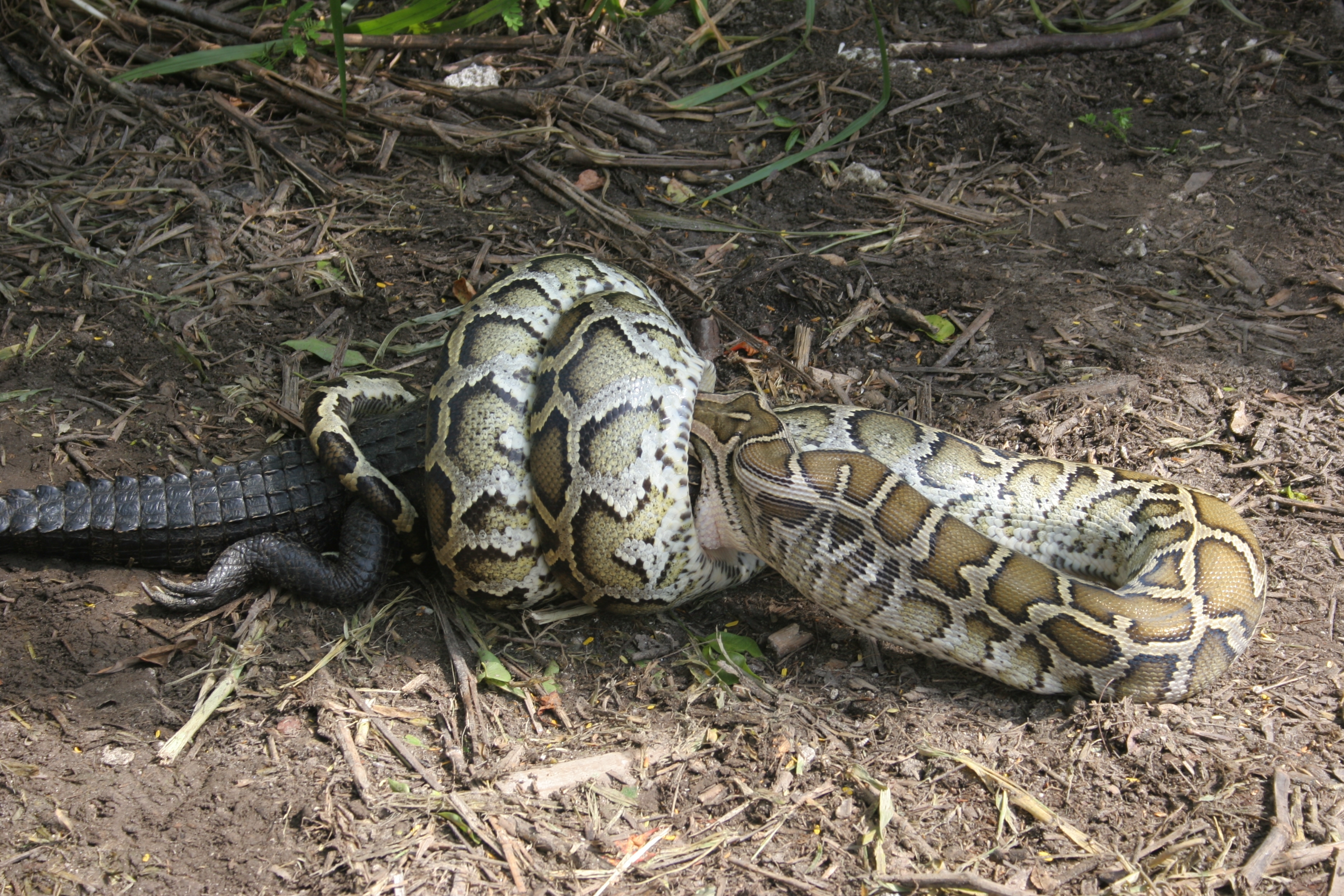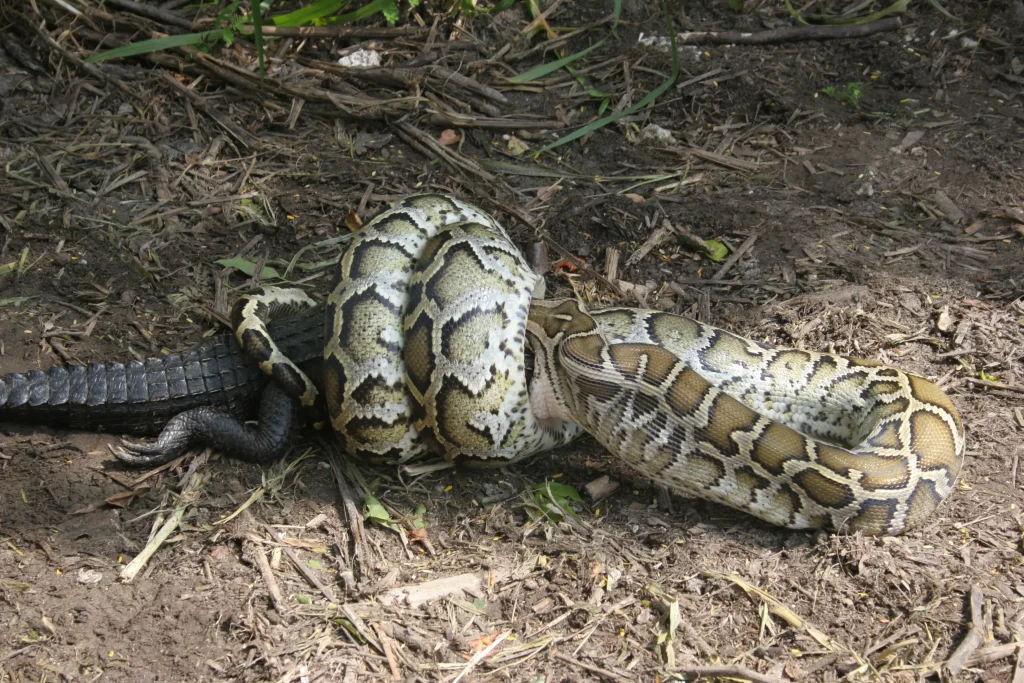Burmese pythons have become a serious threat to the ecosystem of Florida. These invasive species have been multiplying rapidly and have caused significant damage to the native wildlife. The problem has become so severe that it has prompted the state to take action to control the population.
The Burmese python, a native of Southeast Asia, was first introduced to Florida in the 1980s. Since then, they have been reproducing at an alarming rate and have become a top predator in the Everglades. Their impact on the ecosystem has been devastating, and experts have warned that if left unchecked, they could cause irreversible damage. But what makes these snakes so bad, and why are they such a threat to the environment? Let’s find out.
Burmese pythons are an invasive species in Florida, where they have caused significant harm to the ecosystem. These large snakes prey on native birds, mammals, and reptiles, disrupting the natural food chain. They also have no natural predators in the area, allowing their population to grow unchecked. Furthermore, Burmese pythons can carry diseases that can be transmitted to both humans and animals. It is important to take measures to control their population and prevent their spread to other areas.

Why Are Burmese Pythons Bad?
Burmese pythons are one of the largest species of snakes in the world. They are native to Southeast Asia but have become an invasive species in Florida, where they pose a significant threat to the local ecosystem. Here are ten reasons why Burmese pythons are bad and why their presence in Florida is a cause for concern.
1. Threat to Native Wildlife
Burmese pythons are apex predators, which means they have no natural predators in Florida. This puts them at the top of the food chain, allowing them to prey on a wide variety of native wildlife, including birds, mammals, and reptiles. They have been known to eat deer, alligators, and even panthers. The presence of Burmese pythons has caused a significant decline in the populations of native species, which can negatively impact the ecosystem as a whole.
2. Disrupting the Food Chain
The presence of Burmese pythons in Florida has disrupted the food chain. As apex predators, they consume a large number of smaller animals, which can cause a cascade effect throughout the ecosystem. For example, if Burmese pythons eat all the rabbits in an area, then the predators that rely on rabbits for food will have to find alternative sources of food, which can be difficult.
3. Competition with Native Predators
Burmese pythons are also competing with native predators for food and habitat. For example, they compete with alligators for access to water, which can lead to conflicts between the two species. Burmese pythons have been known to eat alligators, which can have a significant impact on their populations.
4. Disease Spread
Burmese pythons can carry and spread diseases, which can have a significant impact on native wildlife. For example, they can spread parasites that can harm or kill native species. They can also spread diseases to other species, including humans.
5. Economic Impact
The presence of Burmese pythons in Florida can have a significant economic impact. They can harm the tourism industry by scaring away visitors who are afraid of encountering these large snakes. They can also harm the agricultural industry by preying on livestock.
6. Human Safety Concerns
Burmese pythons are not typically aggressive towards humans, but they can be dangerous if provoked or threatened. They are large and powerful snakes that can attack if they feel threatened. This can be a concern for people who live or work in areas where Burmese pythons are present.
7. Burden on Wildlife Rehabilitation Centers
The presence of Burmese pythons in Florida has put a burden on wildlife rehabilitation centers. These centers are often overwhelmed with injured or sick native wildlife that has been attacked by Burmese pythons. This can strain the resources of these centers and make it difficult for them to provide care to all the animals in need.
8. Impact on Ecosystem Services
The presence of Burmese pythons in Florida can have a significant impact on ecosystem services. For example, they can harm the water quality by preying on species that help to keep the water clean. They can also contribute to soil erosion by consuming plants that help to stabilize the soil.
9. Difficulty of Eradication
Burmese pythons are difficult to eradicate once they have established themselves in an area. They are elusive and can be hard to find, making it difficult to remove them from the ecosystem. Additionally, they are capable of reproducing quickly, which can make it challenging to control their populations.
10. Lack of Natural Predators
Burmese pythons have no natural predators in Florida, which allows their populations to grow unchecked. This lack of natural predators is a significant concern, as it means that the populations of Burmese pythons can continue to grow and have a more significant impact on the local ecosystem.
In conclusion, Burmese pythons are bad for the Florida ecosystem for many reasons. They are apex predators that can harm native wildlife, disrupt the food chain, and compete with native predators. They can also spread diseases, harm the economy, and pose a safety concern for humans. Eradicating them from the ecosystem is a challenging task that requires a coordinated effort from multiple agencies and organizations.
Frequently Asked Questions
Below are the most frequently asked questions about why Burmese pythons are considered bad.
Q: What makes Burmese pythons bad for the environment?
Burmese pythons are an invasive species in Florida, which means they are not native to the area and have been introduced by humans. They have no natural predators in the area, which has allowed their population to grow rapidly. As a result, they have been disrupting the natural food chain by preying on native species.
Additionally, Burmese pythons are known to transmit diseases to other wildlife, which can lead to the spread of illnesses amongst native species. This can have a significant impact on the ecosystem as a whole, as the loss of one species can have a ripple effect on the rest of the food chain.
Q: How do Burmese pythons affect humans?
While Burmese pythons do not pose a direct threat to humans, they can indirectly impact our lives. For example, they can damage infrastructure such as roads and buildings, which can be costly to repair. Additionally, the spread of diseases from Burmese pythons to other wildlife can potentially impact humans as well.
Furthermore, the presence of Burmese pythons can have a negative impact on the tourism industry in Florida, as visitors may be deterred by the potential danger of encountering a large snake. This can have economic consequences for the state.
Q: How did Burmese pythons become a problem in Florida?
Burmese pythons were first introduced to the Florida ecosystem as a result of the exotic pet trade. It is believed that some pet owners released their pythons into the wild when they grew too large or became too difficult to care for. Over time, the population of Burmese pythons grew and they have since become a significant problem in the area.
Additionally, Hurricane Andrew in 1992 is believed to have contributed to the problem. The hurricane damaged a breeding facility in Florida, which is thought to have led to the release of hundreds of pythons into the wild.
Q: Can anything be done to control the population of Burmese pythons in Florida?
Many efforts have been made to control the population of Burmese pythons in Florida, but the problem persists. Some methods that have been tried include trapping and removing the snakes, as well as encouraging the public to report sightings of pythons. However, these methods have not been very effective in reducing the population.
Some researchers are working on developing new methods to control the population, such as using pheromones to lure the snakes into traps. However, these methods are still in the early stages of development and have not been widely implemented.
Q: Are there any benefits to having Burmese pythons in Florida?
While Burmese pythons are not considered to have any positive impact on the ecosystem in Florida, they do have some economic benefits. For example, the capture and removal of pythons has created job opportunities for hunters and trappers. Additionally, researchers studying the snakes have been able to gain valuable insights into their behavior and biology.
However, these benefits are outweighed by the negative impact that Burmese pythons have on the ecosystem and the economy as a whole.
Burmese Python in Florida is Dangerous because..
In conclusion, the Burmese python is a dangerous and invasive species that causes harm to the ecosystem of Florida. These snakes have no natural predators in the area and have been known to consume a wide range of animals, including endangered species. They also carry diseases that can be transmitted to other animals and humans.
Efforts are being made to control the population of Burmese pythons in Florida, but it is a difficult task. The best way to prevent their spread is to educate people about the dangers of owning these snakes as pets. The state of Florida has even banned the ownership of Burmese pythons, but there are still individuals who illegally keep them.
It is important to continue to monitor the situation and take action to prevent the spread of invasive species like the Burmese python. By working together, we can protect the delicate balance of our ecosystem and ensure that future generations can enjoy the beauty and diversity of Florida’s wildlife.


